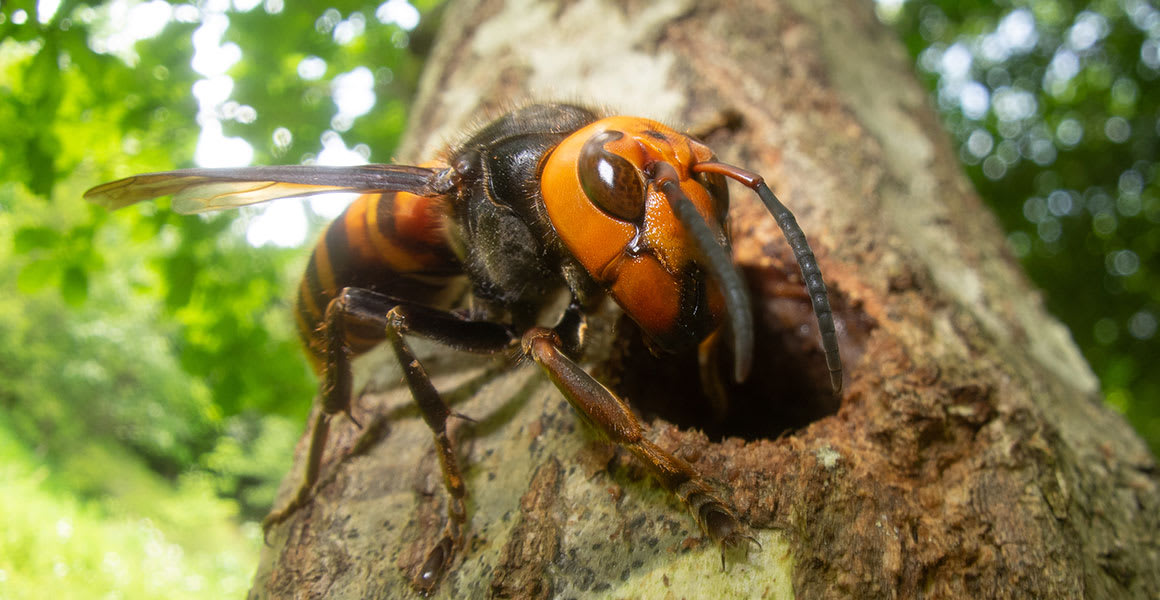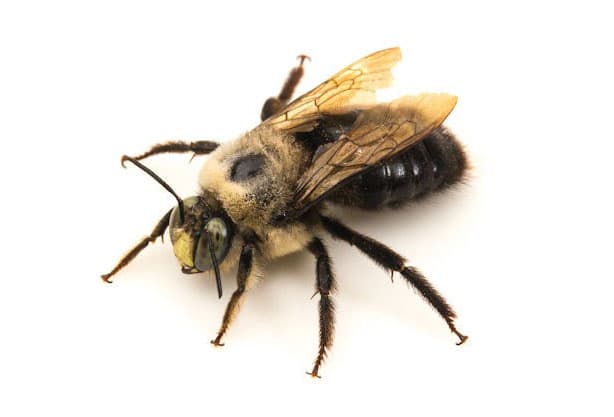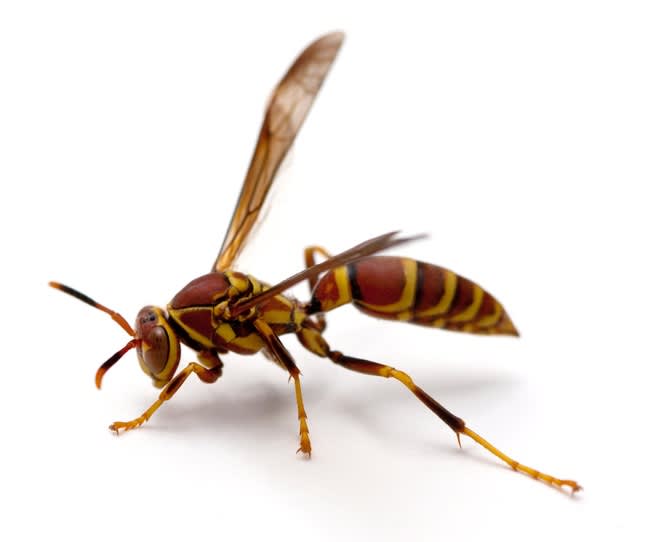Bald-Faced Hornet

What is a hornet?
The bald-faced hornet is a relative of the yellow jacket and receives its name from its huge black color and white face. This stinging insect is called a hornet since its nests are enormous and above ground (ariel nest).
What does a hornet look like?
Bald-faced hornets are named for their ivory-white face coloration. They are easily recognizable.
What does a hornet’s nest look like?
Bald-faced hornet nests often grow to basketball size or larger. Their peak nest populations are 400 or more workers. Also, their nests are covered with paper cartons. They can typically be in higher up locations, 10-12 feet off the ground. Their nest locations vary from hanging in trees or bushes.

Do hornets pollinate?
Hornets hunt for live prey but occasionally will scavenge for sugars. They are not beneficial insects although they do pollinate. They eat insects, so their nests pose a larger danger to humans.
Do hornets sting?
Hornets are absolutely mean and vicious. Bald-faced hornets can be quite aggressive when their space is invaded or the nest is disturbed, presenting a significant stinging hazard. It is reported that they will go for the facial area when they attack humans.
How to get rid of ground hornets?
Our years of experience and customer satisfaction and safety allow us to be one of the top-rated bee removal companies in the area. Not only do we take care of your bee infestation, we can also help with bee control, full hive removal, bee proofing, Africanized bee control, yellow jacket removal, wasp removal, and protection against bumblebees and other stinging insects. One hive can contain thousands of bees and removing them yourself can pose a life-threatening risk. The Bee Removal Specialist will take care of your beehive safely and efficiently.









